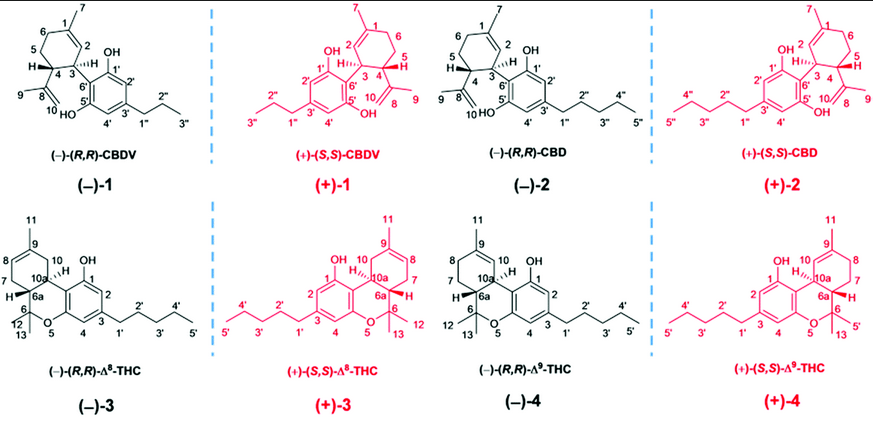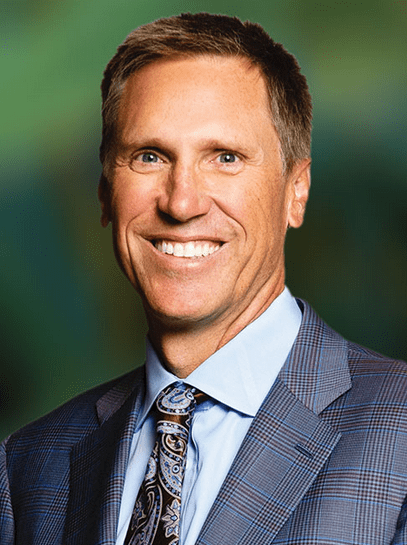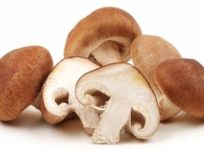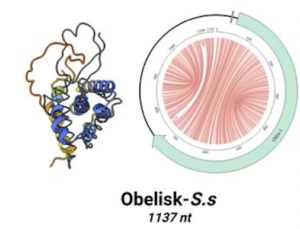Neither Murray nor Almada are categorical nay-sayers on hemp and cannabis. Both have worked with companies developing new cannabis-derived products, and both see tremendous untapped therapeutic potential in cannabinoids.
Almada is currently developing a hemp-based product, and has also been a consultant for several major brands in the space. But he feels strongly that industry players need to be more measured in their claims, and more honest about the ways they use science.
“When you look at the research on the websites of hemp oil extract companies, they link to clinical studies of the 99% pure drug form of CBD, not their own products. There are dozens of studies of purified CBD made by two different manufacturers in Europe. These are very specific, chemically-defined forms of CBD at ~99% purity. But none of the (supplement) brands are carrying that.”
That’s because it’s expensive.
“If we look at the evidence, at the effective doses of Epidiolex (purified CBD), you need 15-20 mg per kg body weight. The doses for treating seizures were in the range of 400 mg to 1.3 g per day. Lower doses did not work. Why? Because if you look at the pharmacokinetics, CBD is actually poorly absorbed.”
Epidiolex is costly. Using it to treat seizures carries a yearly price tag of roughly $32,500 (assuming no insurance subsidization). Even at half that, it’s still expensive.
At best, retail hemp oil extracts are 25% CBD by volume. At recommended doses, they give in the range of 10 mg to 15 mg CBD per day—orders of magnitude smaller than the doses established for the Rx form. Non-Rx nutraceutical companies would be hard-pressed to deliver pharma-level CBD doses at supplement level price points.
Yet some companies insinuate an equivalence to Epidiolex that they have not proven.
“It’s like a fish oil supplement company citing research on prescription Omacor. The products are chemically different, though they’re both “fish oil.”
This does not mean that lower-dose non-Rx hemp oils have no health benefits.
As the old saying goes, absence of evidence does not prove evidence of absence. But Almada stresses that the industry as a whole is hurt when companies make equivalency or efficacy claims that they cannot support with good human data.
The Entourage Effect?
Millions of people take hemp oil products with relatively low CBD levels, and experience benefits in treating a wide range of conditions—everything from low back pain and irritable bowel to anxiety and sleep disorders.
Is this all in their imaginations?
Or is it possible, as some in the cannabis field claim, that the diverse spectrum of cannabinoids, terpenes and other components produced by Cannabis sativa work in concert to produce the beneficial effects?
This is the so-called “entourage effect” theory, popular not just among cannabis advocates but throughout the botanical medicine world. The idea is that plants are biochemically complex, and their salutory physiological effects cannot be pinned down to one or two specific active compounds. The benefits of green tea, for example, cannot be attributed solely to its caffeine content.
The entourage theory led to the marketing concept of “full spectrum” or “broad spectrum” hemp oil. Many companies say products contain “whole plant” extracts that, in addition to CBD, also contain the full gamut of cannabinoids and terpenes.
that, in addition to CBD, also contain the full gamut of cannabinoids and terpenes.
But the entourage effect and the full spectrum concept—appealing though these concepts may be—are largely conjecture, not science, says Almada.
In fact, both would be very difficult to prove scientifically.
3-D Complexity
There are 113 known phytocannabinoids, but we know little about most of them. There’s early-stage research on the physiological effects of a few—cannabinol (CBN) and cannabigerol (CBG), for example. But most are great big question-marks. We simply don’t know how they interact with each other or with human biochemistry.
Then, there are the terpenes—the class of hydrocarbon compounds—that give cannabis, and many herbs and fruits, their distinctive aromas. Cannabis produces a lot of terpenes, including myrcene, limonene, linalool, β-caryophylline, and α-pinene. Some bind to cannabinoid receptors, and may—or may not—have psychoactive effects. Others may exert subtle effects much in the way that essential oils affect physiology.
Research on cannabis terpines is in a very early stage, but it is increasingly clear that these compounds are an important, though little understood part of the cannabis picture.
Adding to the complexity is the fact that beyond the right-left 3-dimensional chirality that characterizes many bioactive chemicals, cannabinoids can exist in four conformations. Physiologically each of the four forms may behave differently, says Almada. “No company asks for the 3D chirality tests, and no analytical labs focus on it. It is a largely unmentioned aspect of chemistry, with big implications for quality control and adulteration,” Almada says.
All this means that the array of compounds within any “full spectrum” hemp product is largely unknown. For the most part, brands do not include detailed cannabinoid profiles on their labels. Given the diverse extraction, production and formulation methods in use, these profiles are likely to vary significantly from product to product.
“It’s like we have a deck of cards and we know it has 52 cards, but we only know how to recognize 10. That doesn’t mean that the 10 we recognize is a full deck,” Almada says.
The consensus on analytical methodology is in flux. It is evolving, but not nearly at the same pace as the retail market. As in all fields, science tends to move much more slowly than marketing. In the hemp/CBD industry, that speed differential is enormous.
The CBDbo Effect?
Some close observers contend that peoples’ responsiveness to low dose CBD may be as much a placebo response as an actual biochemical effect.
Almada is one of them. “There’s so much positive buzz about CBD. People expect that it will have an effect. So, I think a significant element of what we’re  seeing probably is a placebo effect.”
seeing probably is a placebo effect.”
Dr. Murray agrees. “How many double-blind studies in the world are there showing CBD benefits for pain? Zero. Yet every day I get 5 to 10 emails from companies selling CBD for pain. There’s a huge placebo effect. And the more you spend on a placebo, the more effective it is.
According to Richard Carlton, MD, a New York City psychiatrist with extensive clinical experience using various forms of cannabis, there are placebo-controlled studies showing that THC-containing cannabis can have positive effects in people with multiple sclerosis, Parkinson’s disease, dementia, gastroesophageal reflux disorder, ulcerative colitis, premenstrual symptoms and other conditions.
But products containing THC levels above 0.3% are still categorized as illicit drugs by the DEA. Further, THC and CBD are not physiologically interchangeable, and evidence from studies of THC-rich products do not necessarily provide evidence to support low-THC, CBD-rich products.
Murray, Almada and many other cannabis medicine advocates worry that the gap between solid clinical evidence and wishful marketing claims could come back and bite the industry where it hurts, in the form of federal or state regulatory actions, and possibly class action lawsuits (See Cannabis, Hemp & CBD: A Regulatory Update).
The good news is that hemp-based CBD is generally safe. Neither THC or CBD bind to receptors in the brainstem. So unlike opioid drugs, they cannot induce life-threatening physiological effects (See Cannabis: State of the Science).
In a webinar hosted by Holistic Primary Care, and sponsored by Helix Institute for Health, Dr. Carlton stresses that there are definitely patients for whom cannabis-based medications could be problematic: THC is definitely contraindicated in people with unstable heart disease, and it can induce anxiety, even psychosis, in people predisposed to schizophrenia or bipolar disorder.
Both THC and CBD can induce hyperemesis at high doses, and both can affect the cytochrome P450 enzyme system, meaning they can potentially interact with a host of medications, herbs and other nutrients, as was recently explored in a thorough review by ConsumerLab.
Revving Up Research
The bottom line, right now is that cannabis medicine is in a period of rapid change. There’s no question that the marketing is far more evolved than the clinical science.
But thought leaders in the field expect that to change.
“In the future, we’re going to have a much better idea of how the endocannabinoid system works, how we can influence it, how we can push certain buttons, how we can support it naturally without just relying on a single ingredient, CBD,” said Dr. Murray.
Hemp and cannabis companies need to put their money where their mouths are, and invest heavily in research—from basic toxicology and pharmacokinetics, all the way through product-specific clinical trials, says Almada.
Some companies are already starting to do so, and with 350 known trials underway, the scientific basis for guiding the clinical use of cannabinoid-based products will likely become much stronger than it is now.
No doubt, stronger science, better analytical methods–and possibly, a few legal and regulatory actions—will thin the currently swollen ranks of companies promoting CBD and other cannabis-derived medicines. But most observers agree that this would be a very good thing.
“Five years from now, we will be having very different conversations,” Almada said.
END







